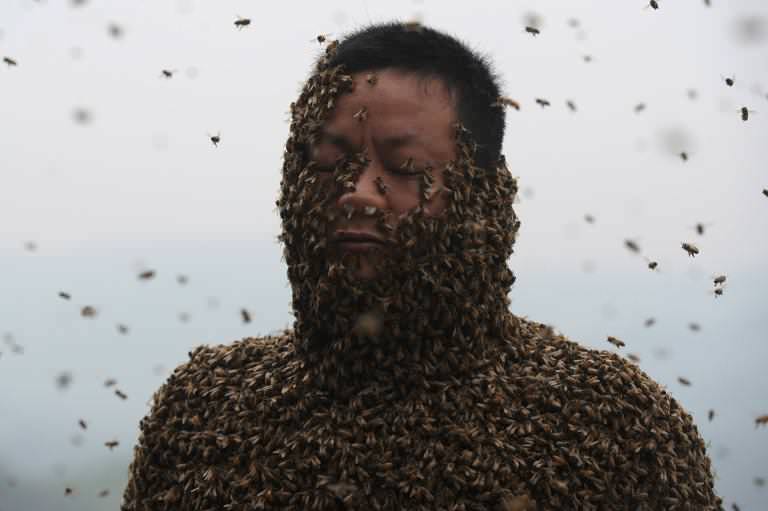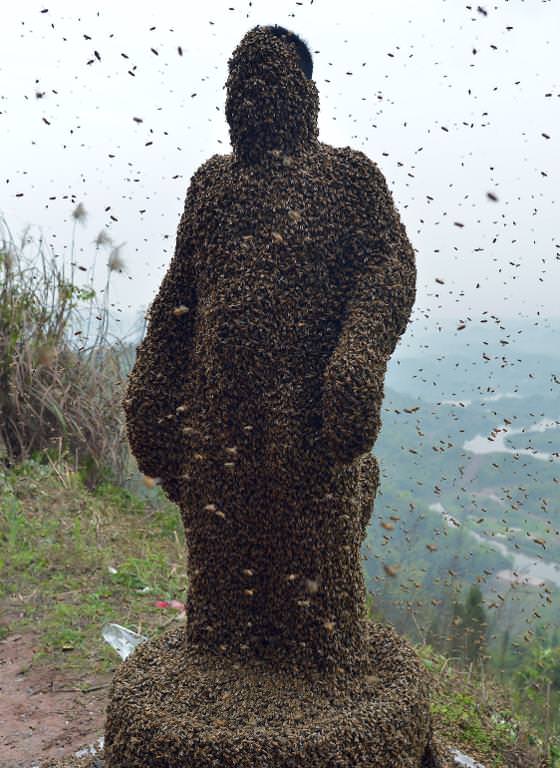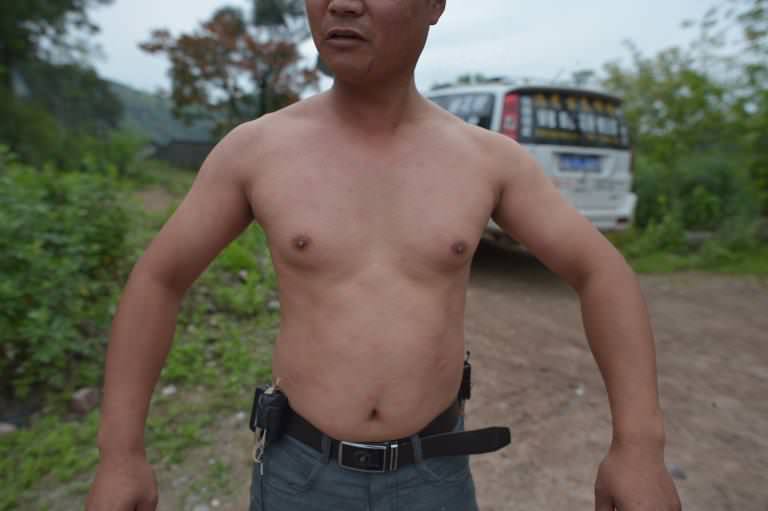The following information was provided by HCBA club member, Roxie Pin. If you were involved in the study and would like to share your experience with Roxie and/or the group, please email us or comment below. roxiepin@gmail.com
I am very eager to know if others from
the club had participated in the study with Dr. Lu last summer. I am
alarmed about the Dinotefuran in the honey and wanted to know if anyone else
received these kinds of results!?!?
I live in a very rural area, but there
are homes around where people treat their lawns. It's also very likely that
there are agricultural plots where people may not be practicing organic or
chemical free pest control.
I am devastated. I also am 98%
sure that hive is... dead.
Did anyone talk about this study? Do
you know if anyone else participated? I am going to follow up with Dr. Lu, but
in the meantime, I'd love to gather more ammunition to fight for the case to
eliminate this crap.
Thanks, and hope all is well with
you. I do miss the camaraderie of the meetings.
Roxie
Dear Roxanne,
We appreciate your participation in the
MassBee Study since 2013 and your patience for the results to be available to
you.
Here are the pesticide concentrations in the
pollen and honey samples that you sent to us. Those pesticides are neonicotinoid
insecticides, which have been implicated for the cause of colony collapse
disorder, or CCD.
In addition, we would like to ask you several
short questions, in specific to the hive that you collected samples for us.
Your answers will be a huge compliment to the overall results. You can just
write the answer below each question, and then send this email back to us.
We are preparing to publish the data without
the identify of your hive. Upon the acceptance of the manuscript for
peer-review publishing, we will send you a copy for your reference. We thank
you again for your enthusiastic help in this project. Please do not hesitate to
contact us for any questions you may have.
HERE ARE YOUR RESULTS.
The concentration unit is ppb (parts per
billion). BLOQ stands for below the limit of quantification, or close to
non-detectable.
|
Month
|
Dinotefuran
|
Acetamiprid
|
Flonicamid
|
Clothianidin
|
Thiacloprid
|
Imidacloprid
|
Nitenpyram
|
Thiamethoxam
|
|
April
|
BLOQ
|
BLOQ
|
BLOQ
|
BLOQ
|
BLOQ
|
BLOQ
|
BLOQ
|
BLOQ
|
|
|
May
|
BLOQ
|
BLOQ
|
BLOQ
|
BLOQ
|
BLOQ
|
0.1
|
BLOQ
|
BLOQ
|
|
|
June
|
BLOQ
|
BLOQ
|
BLOQ
|
BLOQ
|
BLOQ
|
0.6
|
BLOQ
|
BLOQ
|
|
|
July
|
0.6
|
BLOQ
|
BLOQ
|
BLOQ
|
BLOQ
|
3.9
|
BLOQ
|
BLOQ
|
|
|
August-pollen
|
BLOQ
|
BLOQ
|
BLOQ
|
BLOQ
|
BLOQ
|
BLOQ
|
BLOQ
|
BLOQ
|
|
|
August-honey
|
14.5
|
BLOQ
|
BLOQ
|
BLOQ
|
BLOQ
|
0.5
|
BLOQ
|
BLOQ
|
|
Chensheng (Alex) Lu, PhD
Associate Professor of Environmental Exposure Biology
Dept. of Environmental Health
Harvard School of Public Health
Office - Landmark Center
West 404G
401
Park Drive, Boston MA
02215
Lab - Bldg 1, Rm G-5, 10, & 12
Dear Dr. Lu,
Thank you so much for allowing me to
participate in this study. In all honesty, I am shocked and devastated by
the Dinotefuran level in my honey. I've sold this honey to my neighbors ~
one of whom is a 45-year-old pregnant woman who is trying to do everything
possible to bring health to her unborn child due in 4 weeks. This is only my
second year with a harvest and because I had honey to spare, when I put it up
for sale, this woman bought a lot. The other woman who I am concerned about is
a cancer patient. She bought it believing in all the healthy benefits....
I don't know what this number means,
but I feel like I have not only destroyed their good intentions, but made them
worse. Furthermore, my family has eaten a LOT of this honey. I started raising
bees for the health benefit ~ not to increase my risk factors!!
Maybe my responses to your questions will help you understand my
concerns.
HERE ARE THE QUESTIONS:
1. Have your hive died in 2013/2014?
Yes, I collected all pollen and honey from just this hive and I
am 98% sure it is dead. If we ever get a warm enough day in the near
future, I will confirm. I do not chemically treat for mites. This hive
also had a queen replacement. It was originally an Italian queen and I
only had a carniolian queen available. By the end of the summer, the
worker bees observed going in and out were mostly all carniolian. Another
difference between this hive and my other hive is that these bees in this hive
were very reluctant to take any supplemental food in the fall.
1a. If your hive is dead, do you see a load of dead bees at the
bottom board of the hive, or your dead hive is relatively empty?
Will respond to this question later once an inspection has been
made.
1b. If your hive is dead, do you know when approximately?
There was activity three weeks ago (like Feb 8-9), but it was
not strong and the temperature was too cold to do a thorough inspection. The
last two times I went out after that when clearing around the hives from the
storms, I have not been able to hear buzzing when I knock on that hive, but the
neighboring hive does respond. I'm fairly certain it is dead or close to dead
and have ordered a package of bees to replace this hive.
1c. If your hive is alive, is it normal, weaker than normal, or
very weak?
If it is still alive, it is VERY weak. I would have called it
very weak when I went in that second weekend in February.
2. How do you describe the location of where you set up this
hive, urban, sub-urban, or rural?
I live in Huntington,
MA. It is very rural,
2,500-3,000 population, mountainous with the Westfield River
running by the property. We are starting a Christmas Tree Farm on the
property.
3. Are there any agricultural field nearby your hive
location (within 2-3 miles)?
There are no known big agricultural
fields near me. I do have smaller plot farmers that I know are using
organic controls with pests. There are homes around me where people treat their
lawns, including a guy on the hill immediately across the street who works for
a lawn company catering to the suburbs. He is obsessed with his lawn and other
neighbors have long been concerned about him and the chemicals that come
tumbling down the hill in rain storms toward us. It's also very likely
that there are interspersed agricultural plots where people may not be
practicing organic or chemical free pest control within the radius.
I honestly thought that my rural living should have come up with much
clearer results. I am sick about these results and the chemical impact on
us. Should I throw out any remaining honey? I need to understand these
numbers.
Thank you,
Roxie
Dear
Roxie,
I can understand your remorse after seeing the
results. I don't think you are responsible for this. Neither do your bees. We
have analyzed organic honey samples in a separate study, and found high levels
of neonicotinoids too. Only one honey sample has no neonicotinoids. Yes, only
one!!! Since neonicotinoids are so ubiquitous and systemic in plants,
they are everywhere once applied. And they will be persistent in the
environment too. I conduct this study aiming to raise the awareness of
the danger of neonicotinoids. Our government needs to answer this question of
"why your bees could take home with so much of imidacloprid and
dinotefuran? In your case, not only those pesticides are harming your bees, but
also you and whoever consume your honey.
I do not know what those numbers mean either.
But those are very bad pesticides (neurotoxins). I don't know how you
should inform your friends who bought your honey for the purpose of being
organic consumers either. It is a shame to throw the honey away, but knowing
that your honey contains two neonicotinoids, I would not continue to eat those.
However, I do hope that you could find out
where dinotefuran comes from. The landscaping neighbor on the hill might be a
good starting point. As you probably know that bees only forage 2-3 miles from
their hives so it has to be a specific use of dinotefuran around your hives. Do
you know where your bees go out to get nectar (what plants, trees, or flowers)?
I apologize for making you very uncomfortable
about the results. I hope to make the best use of those results so we make some
changes.
Best wishes.
Chensheng (Alex) Lu, PhD
Associate Professor of Environmental Exposure Biology
Dept. of Environmental Health
Harvard School of Public Health
Office - Landmark Center
West 404G
401
Park Drive, Boston MA
02215
Lab - Bldg 1, Rm G-5, 10, & 12

















